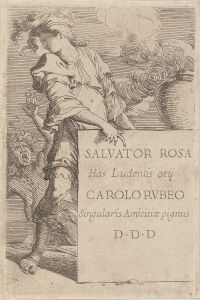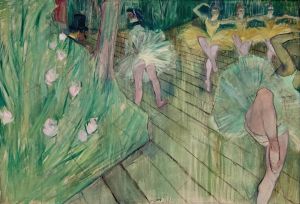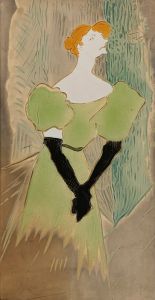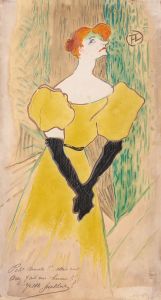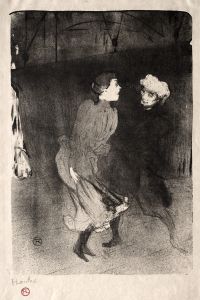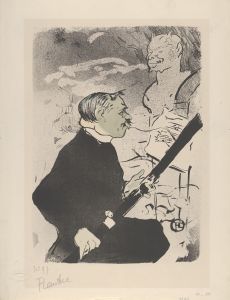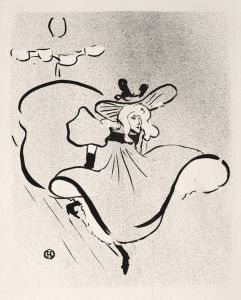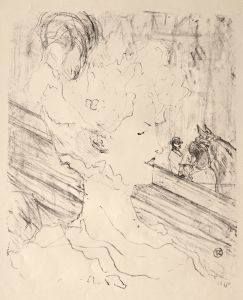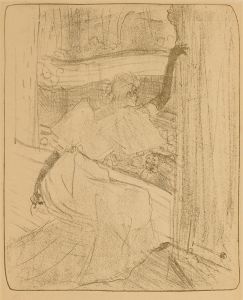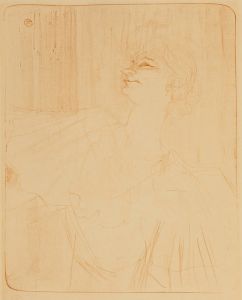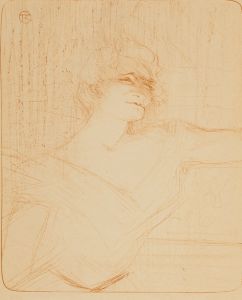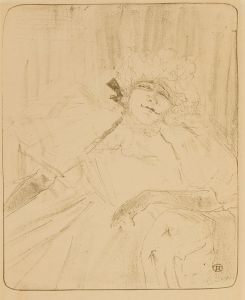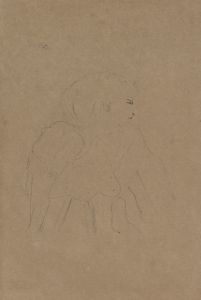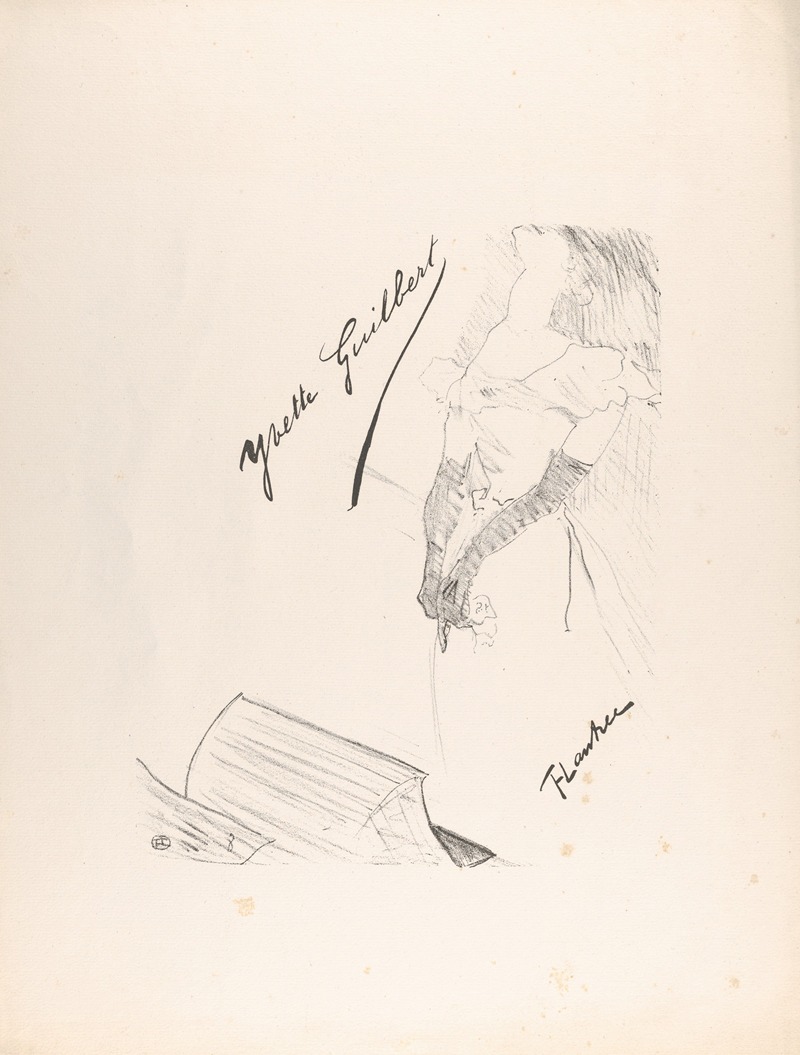
Frontispiece – Yvette Guilbert before the Prompter’s Box
A hand-painted replica of Henri de Toulouse-Lautrec’s masterpiece Frontispiece – Yvette Guilbert before the Prompter’s Box, meticulously crafted by professional artists to capture the true essence of the original. Each piece is created with museum-quality canvas and rare mineral pigments, carefully painted by experienced artists with delicate brushstrokes and rich, layered colors to perfectly recreate the texture of the original artwork. Unlike machine-printed reproductions, this hand-painted version brings the painting to life, infused with the artist’s emotions and skill in every stroke. Whether for personal collection or home decoration, it instantly elevates the artistic atmosphere of any space.
Henri de Toulouse-Lautrec, a prominent French painter and illustrator, created the work titled "Frontispiece – Yvette Guilbert before the Prompter’s Box" in the late 19th century. Toulouse-Lautrec is renowned for his depictions of Parisian nightlife, particularly focusing on the vibrant and often bohemian world of cabarets, theaters, and dance halls. His works are characterized by their dynamic compositions, expressive line work, and keen observation of human behavior.
Yvette Guilbert, the subject of this particular piece, was a celebrated French cabaret singer and actress known for her unique style and emotive performances. She was a prominent figure in the Parisian entertainment scene during the Belle Époque, a period marked by cultural flourishing in France. Guilbert was particularly famous for her long gloves and her ability to convey deep emotion through her songs, which often had a satirical edge.
The artwork "Frontispiece – Yvette Guilbert before the Prompter’s Box" captures Guilbert in a moment of performance, highlighting Toulouse-Lautrec's ability to convey the essence of his subjects with minimal detail. The term "frontispiece" refers to an illustration facing the title page of a book, suggesting that this work may have been intended as an introductory image for a publication, possibly related to Guilbert's performances or a collection of works by Toulouse-Lautrec.
Toulouse-Lautrec's style is evident in this piece through his use of bold outlines and a focus on the figure of Guilbert, often isolating her against a simplified background to emphasize her presence and expression. This technique allows the viewer to focus on the character and emotion of the performer, a hallmark of Toulouse-Lautrec's portraits of entertainers.
The setting of the prompter’s box is significant, as it places Guilbert in the context of a theatrical performance, underscoring her role as a performer who captivated audiences with her voice and stage presence. Toulouse-Lautrec's choice to depict her in this setting reflects his interest in the behind-the-scenes aspects of performance and the intimate moments that define a performer's interaction with their audience.
Toulouse-Lautrec's relationship with Guilbert was one of mutual respect and admiration. He was drawn to her charisma and talent, and she appreciated his ability to capture the spirit of the performers and the vibrant atmosphere of the venues where they worked. This mutual appreciation is evident in the sensitivity with which Toulouse-Lautrec portrays Guilbert, capturing not just her likeness but also the essence of her stage persona.
Overall, "Frontispiece – Yvette Guilbert before the Prompter’s Box" is a testament to Toulouse-Lautrec's skill as an artist and his deep connection to the world of performance. Through his work, he provides a window into the cultural life of Paris during the Belle Époque, celebrating the performers who defined an era with their artistry and charisma.





